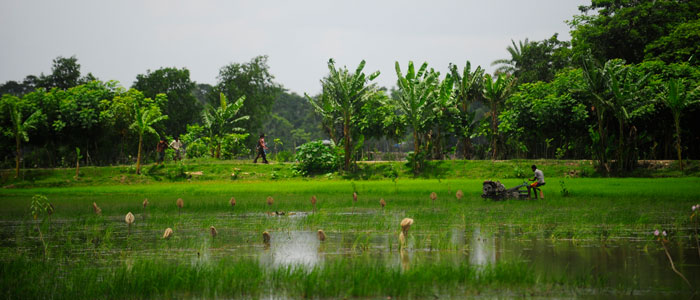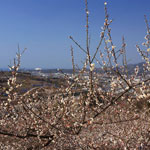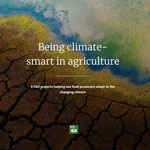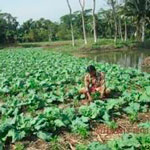Floating Garden Agricultural Practices, Bangladesh
GIAHS since 2015

In some parts of Bangladesh, most affected by flood and where water remains for a prolonged period of time, farmers have developed a method to use their submerged lands for crop production. For more than three centuries, floating agriculture is a useful method considering the economic, environmental and as well as social aspects.
Allowing the satisfaction of their living needs, floating gardens have also permitted to give an access to lands to the poorest communities. Last but not least, promoting their integration it has also improved the gender balance in these communities. This system is an example of the adaptation to hard climatic conditions but also to climate change.
The landscape with colourful diversified floating gardens has a unique aesthetic view. Dealing with nature and human needs, floating garden are integrated and sustainable in the Bengali landscape. In summer, flowers of water hyacinth bloom on the water. Contrast between light purple of flowers and deep green of leaves creates beautiful scenery.
News
Sustainable farming systems in Bangladesh and Japan receive global recognition
Four traditional farming systems in Bangladesh and Japan have been designated today by FAO as "Globally Important Agricultural Heritage Systems."
Story
Being climate-smart in agriculture
The reports are out and the message is clear: we all need to make decisions with the climate in mind. Agriculture is one of the largest greenhouse gas emitters, but it is also one of the climate’s greatest allies. The agriculture sector can play a large role in mitigation by reducing emissions and avoiding further loss of carbon stored in forests and soil. Keeping soils and forests healthy also helps fight climate change as both of these act as “sinks” that sequester carbon. Lastly, reducing food loss and waste and advocating for better food consumption patterns are other important efforts within agriculture’s sphere of influence. Read more
Best agricultural practices
Traditional floating garden practices for vegetable production
The floating garden practice is a local indigenous production system the successful in the wetland/submerged/flooded areas in the selected south and south-western districts (Pirojpur, Barisal and Gopalganj) of Bangladesh. Floating garden agricultural practices have been adopted by the local farmers for the past two centuries. This technology describes in detail how to construct and manage floating gardens for production of different crops (vegetables and spices). Read more
Traditional floating garden practices for seedling production
One type of floating beds for floating garden agricultural practices is used mainly for seedling production of different vegetables (bottle gourd, pumpkin, cucumber, bitter gourd, papaya, etc.) and spices (chili, bombai chili, etc.) for marketing during monsoon season (usually from June to October month). This system is traditionally practiced in the wetland/submerged areas of Pirojpur (Nazirpur and Nesarabad sub-districts) and some part of Barisal (Banaripara sub-district) districts. The seedlings produced under this method are generally used for subsequent vegetables/spices production on normal land in the southern and south-western regions of Bangladesh. Read more






